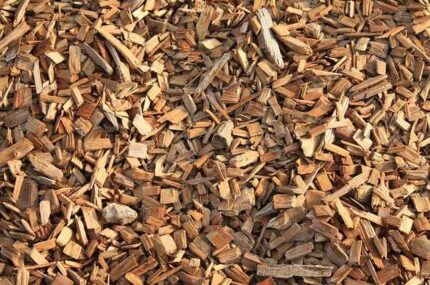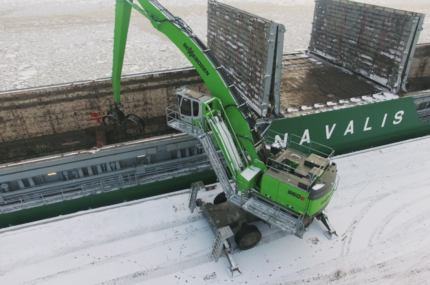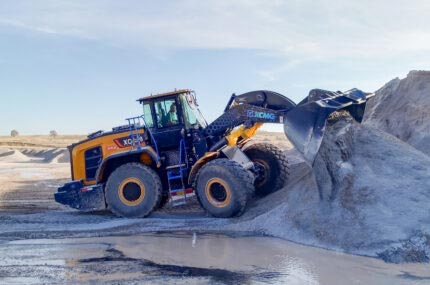Recent years have seen the UK’s knowledge of the benefits of ancient peat bogs increased thanks to the media.
Healthy peat bogs act as ‘carbon sinks’ storing huge amounts of carbon. However, damaged bogs dry out and release carbon dioxide into the atmosphere, accelerating climate change. Recovering this habitat is important not only for our climate, but they are also home to rare plants, birds and insects not found in any other habitat.
While many peat bogs remain in healthy condition, this is mainly down to excellent care and maintenance by landowners. Sadly, damage does occur and whether this is down to poor land management or in many cases, plain and simple erosion due to weather conditions. Thankfully, there are companies on hand with the expertise in restoration of these important habitats.
Based in Strathpeffer, Highland Conservation is headed up by MD Andrew Coleman and is one of Scotland’s leading wildland and wilderness construction, restoration and conservation experts. Offering a professional combination of consultancy and construction services forged from over 20 years of service to the industry, Highland Conservation have brought their expertise and experience to some of Scotland’s most remote and fragile environments.
Whilst environmental protection works are the company’s key service, they have also built up an enviable reputation as one of the UK’s premier footpath construction companies, delivering equally high-quality services for hill track and footpath landscaping. Responding to the increasing need for safe vehicular access into remote and inaccessible areas for land management purposes, Highland Conservation have developed a range of techniques to sensitively construct hill tracks that are ‘fit for purpose’ with very low visual and environmental impact. With extensive experience of working on designated and protected sites throughout Scotland, the company provides a full range of services for all aspects of peatland restoration – from stand-alone surveys through to the full contract management of large-scale projects.
Like any company offering specialised services, their need to operate equally specialised equipment has seen the company invest heavily in a fleet of bespoke, low ground pressure excavators ranging from 7 to 10 tonnes. This large fleet includes three Kobelco SK75SR excavators, one of which is a new SK75SR-7 model.
Highland Conservation has undertaken numerous projects across the North of Scotland restoring and bringing back to life many thousands of acres of peatland and fragile habitats. One of the company’s current projects is on the Kiltearn Estate just North of Dingwall in Ross and Cromarty.
Like much of their peatland restoration projects, the work is off the beaten track Working in sometimes very remote locations calls for the teams to be very self-sufficient. Not only getting machines into these locations but also the day to day operations of gaining access to the machines, handling refuelling operations and the inevitable breakdowns. With this particular project starting about 4 miles off the end of the tarmac road, gaining access to the work area was an ordeal in itself.
We met up with Works Foreman Owen Llewelyn and his team of experienced operators as they started a typical day high up on the moors. With a team of five Kobelco excavators working on site, managing the daily fuel consumption was helped by a bunded tank mounted to the site’s main access vehicle, an ex-military Hägglund all-terrain vehicle. With the tank topped up, the team squeezed into the Hägglund for the 40-minute journey over the rough tracks to the work area. Whilst the first couple of miles would have been accessible in a carefully driven 4×4, the remainder showed just why the LGP tracked personnel and material carrier was required. Once at the remote site and the Kobelco machines topped up, it was down to the day’s work of reforming many of the drainage channels which manage the abundant water found on the moors.
Owen had been handed the keys to the latest Kobelco excavator to enter the fleet, the SK75SR-7. Having previously used one of Kobelco’s older SK75SR-5 models, he was in a good position to speak about the improvements in the latest model. “I’m a big fan of the brand!” Owen commented as he took a break from the levers. “The older models have been very reliable and have proven themselves on the fleet. This new version is just a step up from the dash 5 machine with an increase in operator comfort and power.”
Owen also heaps praise on the size of the Kobelco cab compared to its rivals on site. “The Kobelco cab is huge compared to the other machines we have, so much so, I have enough room to put the seat almost fully back and have space left for my dog to sleep on the shelf behind it!” The layout of the Kobelco cab is seen as one designed around the operator with all the controls sensibly laid out and within easy reach of the operator.
Whilst the upper structure of the Kobelco excavator remains the same as it did when it left the factory, the undercarriage has been modified to meet the specialised requirements of the Highland Conservation team. “This unit now has 900mm track pads allowing it to effectively float across the peat.” Owen commented. “Some areas can be very wet and spongy but with so much track on the ground at all times, not only can we access almost any land, but there is also minimal disturbance and damage to the ground as we pass over it.”
The Kobelco SK75SR is powered by a fuel efficient and powerful StageV Yanmar diesel engine. The compact 3.3 litre engine develops 57.6kW and 296Nm of torque, more than enough to allow the Kobelco to perform some of the harder digging it may encounter. Reliability is a key factor for the team and Owen says that his previous Dash 5 model was very reliable in service, never requiring the intervention from the Molson service team on any remote project. Such reliability was one of the factors which led the company into the purchase of his new Kobelco machine. “We have had excellent service from the team at Molson.” Owen commented. “Any minor issues we have had, they are always at the end of the phone and willing to help guide you through the problems.”
Thanks to the wider undercarriage, there is no requirement for the usual dozer blade to be fitted. “The excavator is extremely stable in all positions.” Owen explains. “The material we dig isn’t the heaviest but whatever I do, I have total confidence in the ability of the machine.” The standard Kobleco boom and stick configuration comprises a 3.82m m gooseneck boom fitted with a 1.71m stick. The machine’s reach and versatility has been further enhanced with the addition of an Exac1 tilting hitch. “I love these hitches for their build quality and versatility.” Owen explained. “They’re a robust bit of kit and unlike the tilting ditching buckets the other machines have, I can use a variety of buckets with it giving me that little bit of versatility over the other machines.”
The works the team were busy undertaking involved the maintenance and restoration of the channels running through the peat. Weather and erosion had taken much of the vegetation away from the banks of the channels causing them to erode quicker. Owen and his team were removing and reshaping sections of the moor to allow vegetation to be placed on the banks of the channels and protecting them from further damage. “It isn’t a job for someone who just wants to go as fast as they can.” He laughs. “We have to be very careful in digging and placing the material and reinstating the excavated parts of the moor. It’s a time-consuming job, but one which is satisfying and very much needed for the upkeep of these fantastic habitats.”





